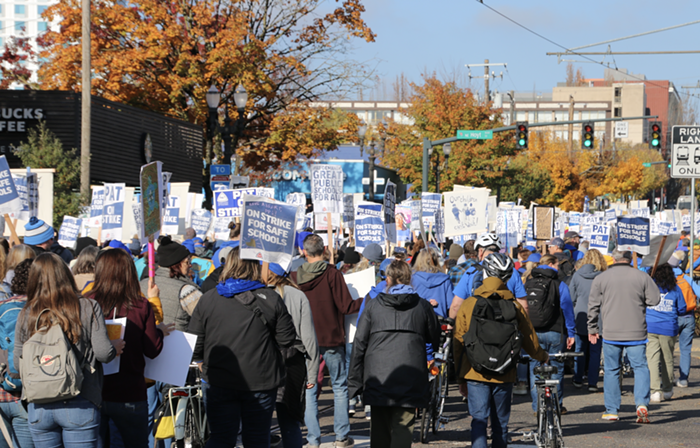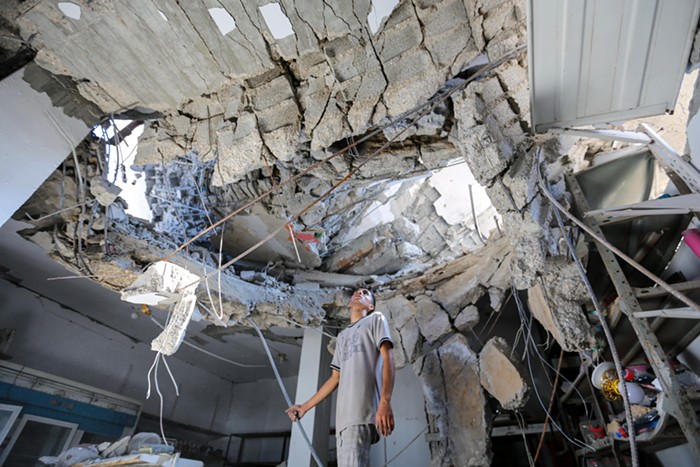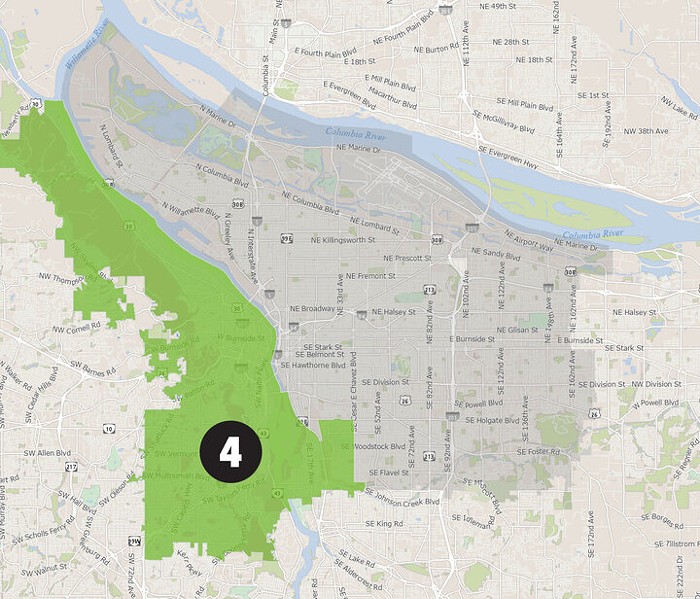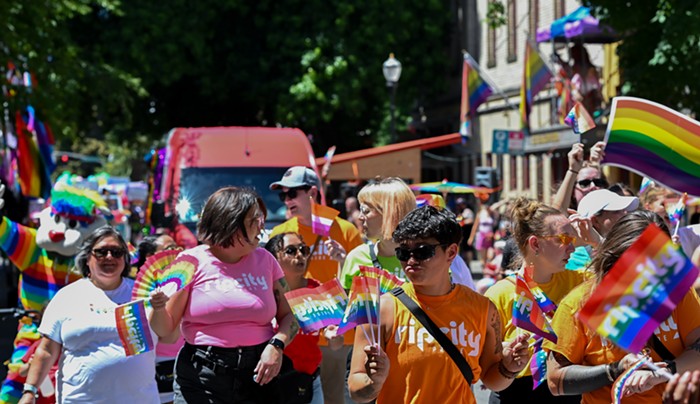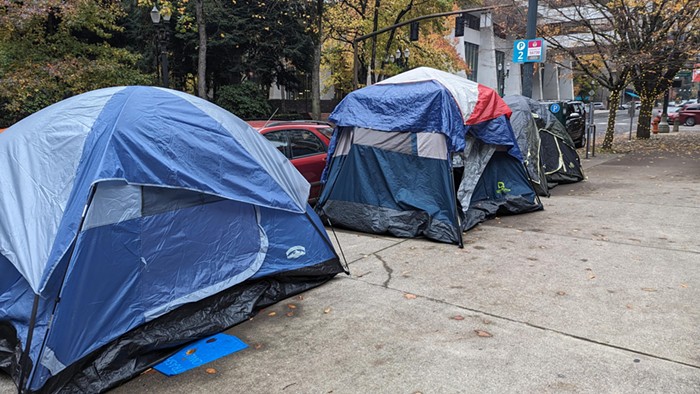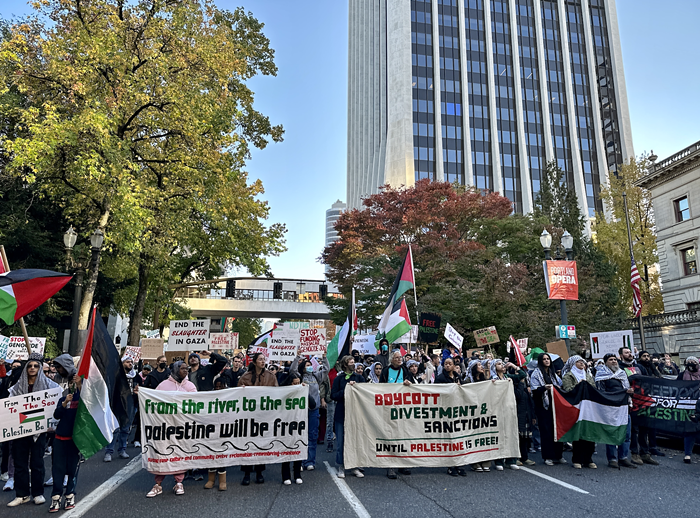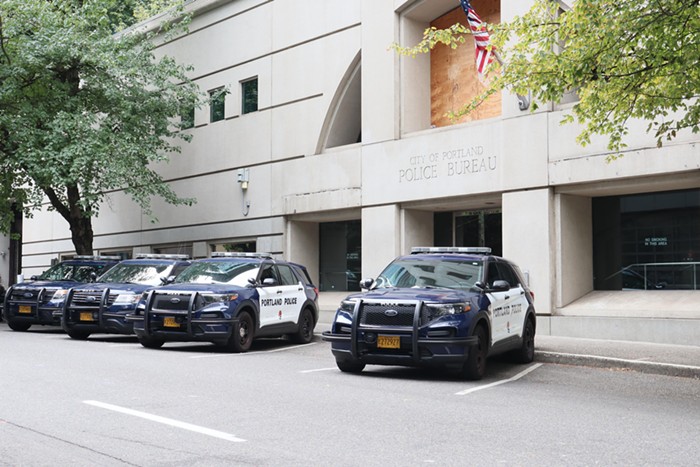AFTER FIVE LONG years of political wrangling, and $46.9 million in investment, the city's major new homeless service center is (almost) open for business.
Set to swing open its doors in mid-June, the new Bud Clark Commons (formerly the Resource Access Center) will be home to 90 bedbug-proof shelter cots, 130 units of permanent housing, new offices for 50 staff members and counselors, and a public day-use space including 100 lockers, an art room, and free haircuts.
Politicians, business owners, and homeless advocates hope the building—rising eight stories next to Union Station—will cast a long shadow over downtown, giving people who sleep on the street an easy way to find help and a humane place to pass their days.
Though it's a giant step forward for Portland's social services, the shiny new project is no silver bullet for the city's homeless issues.
On the day it opens, the Commons' permanent housing units will have a waiting list 150 names long, and the average wait to get even a temporary shelter bed will clock in over two months.
Reporters got a sneak peek of the Holst Architecture-designed center during a tour last week. Men used to cramming into narrowly spaced bunk beds at the Transitions Projects shelter over on the bus mall will have far more room to stretch out in the Commons' bottom-floor shelter, after they put their belongings through a bedbug-killing heat chamber, pass a tuberculosis test, and show they're clean and sober.
"What we're looking for is to treat people with more respect," Project Manager April Berg said as she showed off new showers and a volunteer-run kitchen that will serve one hot meal a day to whoever shows up.
The top four stories feel like a college dorm; each permanent housing unit is a furnished studio replete with kitchenette and private bathroom.
These enviable rooms will go the city's 150 most vulnerable homeless people, as ranked by a 10-factor survey the Portland Housing Bureau distributed to four local clinics. Rent will be a flat 30 percent of residents' income, assuming they have one.
The building's main lobby is a vast space with artistic hanging lights and room for plenty of seating. People in need will be able to sign up for social-services appointments or GED classes, and snag a lesson with an art therapist paid for by the city's "one percent for art" program.
"When you go to other centers and see a day center, you see a bunch of seats and a TV screen," said City Commissioner Nick Fish, who oversees the housing bureau. "We're not warehousing people. We're helping people prepare for life."
The project is a major success for Fish, who helped work out a funding scheme when the project's finances got rocky in 2009. Of the project's $46.9 million pricetag, $29.5 million came from urban renewal funds, with the rest funded by low-income housing tax credits, a federal grant, and city cash.
Though a study released last week showed that the Portland Development Commission fell short of its goals to use minority- and women-owned companies for 20 percent of construction projects, the Bud Clark Commons slipped past the controversy: Women- and minority-owned companies account for 24 percent of construction and professional services cash spent on the project.
"It's not the end-all, Shangri-la of housing services," says Street Roots Executive Director Israel Bayer, who employs homeless people as newspaper vendors. Bayer is excited that the Commons will streamline services but adds, "Long term, there's still a big challenge and there's just going to be more individuals out on the streets than there is housing available."
While the Housing Authority of Portland has more public housing units available than it did back in 2007, when the Commons was just a glimmer in then-Housing Commissioner Erik Sten's eye, the waitlist to get into the units has jumped from 3,223 people to 6,823.
"The police will have someplace to tell people to go," jokes homeless advocate Patrick Nolen. "Honestly, I hope it works and it proves such a success that they look to build other ones just like it."

